Estimated reading time: 16 minutes
From Planning a Garden to Getting Your Tools in Shape, Wintertime Can Be a Productive Time on the Homestead.
Winter tends to be a less active time for most homesteaders, but that doesn’t mean there’s nothing to do. Better yet, most of the winter projects tend to be smaller in scale so you can relax and enjoy the work.
Want to save this post for later? Click Here to Pin It On Pinterest!
The best way to start is to think about things you didn’t have time to do when the weather was warmer, or things where could only do the bare minimum because you were too busy. These should be your priority.
Then, think about the things you have to do to hit the ground running in the spring. And finally, winter is a great time to try something new that you’ve had in the back of your mind, like quilting or an old tool restoration.
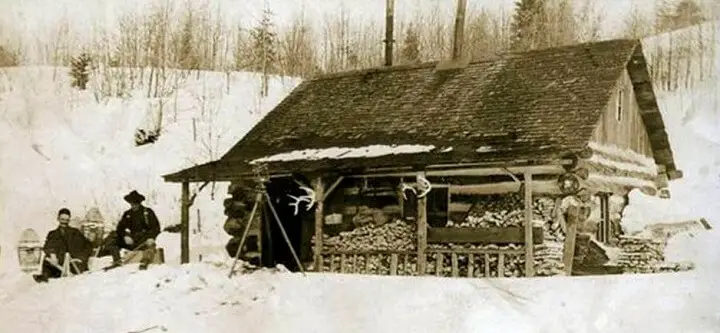
Priorities First
Some things we not only enjoy doing, we know we have to do them. And we always seem to derive a certain degree of satisfaction, whether it’s admiring a perfect, new edge on a sharpened axe or surprising ourselves with some quick leatherwork.
Here are some chores to think about as the snow gets deeper.
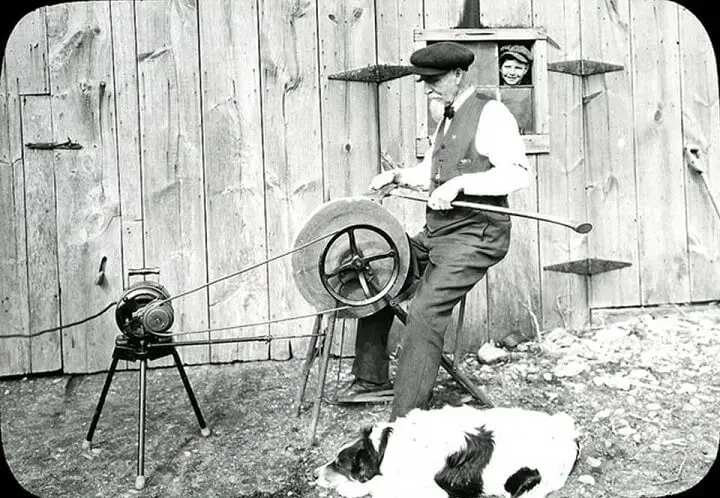
Tools
1. Sharpen axes, draw shaves, shingle splitters, machetes, knives, or any other tool that needs a sharp edge. We do this all the time, but winter is a good time to get the best edge on every cutting tool.
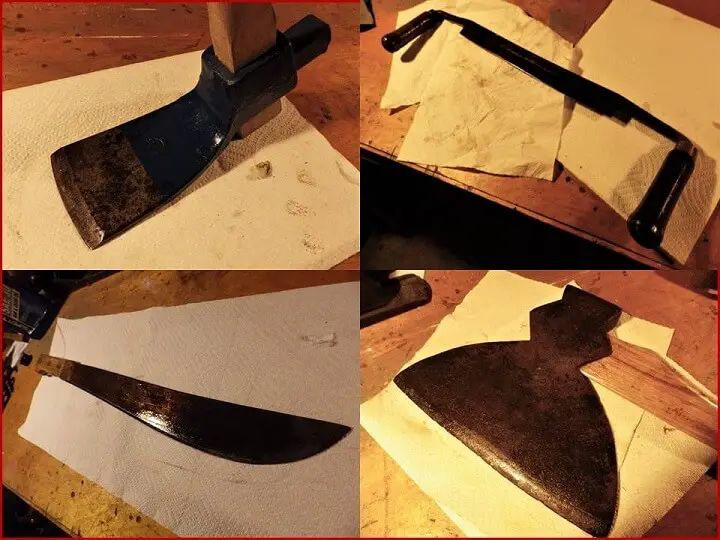
2. Rustproof all of your tools and get some of those tight wrenches oiled and working freely. Some sandpaper and regular motor oil applied as a light film with a rag works fine or you can use specialized products for rust removal or lubrication.

3. Protect tools that are subject to rusting or dulling. Basic leather craft skills can give you a low cost, effective way to keep your tools in the best shape.
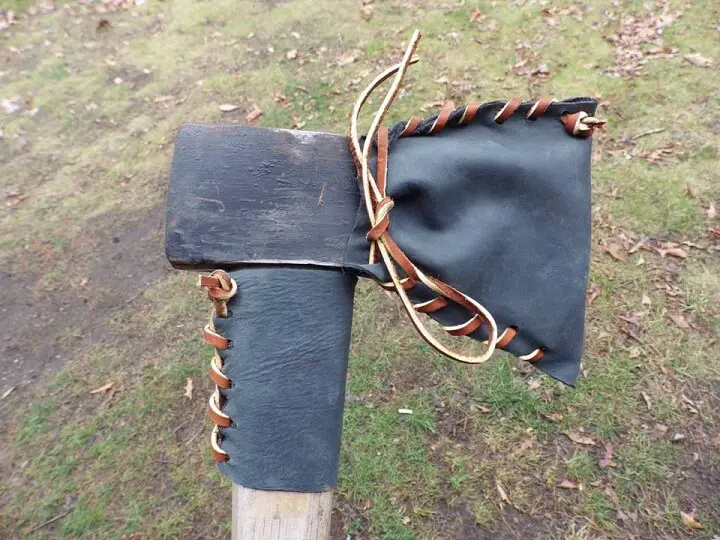
4. Restore and repair tools with new axe handles, parts, or even a few winds of friction tape to give you a better grip.
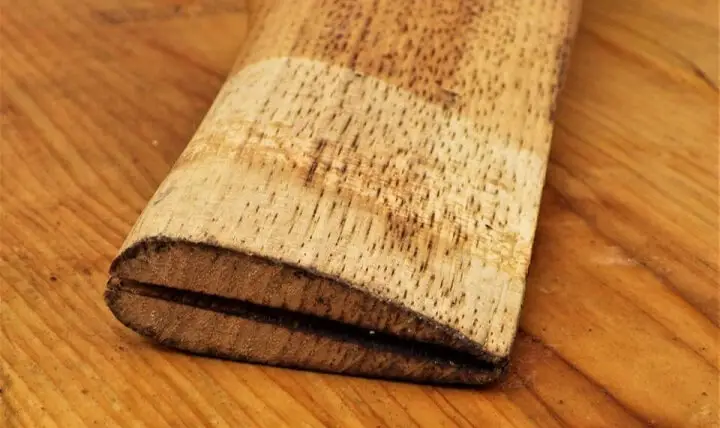
Powered Equipment
As much as homesteaders value the old pioneer ways of doing things, it’s a good bet more than a few of us have a chainsaw and maybe a tractor, roto-tiller, leaf blower, log splitter, generator… you get the idea.
Mechanical equipment needs some attention over the winter. Here are some things that you probably already do.
5. Winterize any gas engines with a gasoline treatment like Stabil to protect the carburetors and fuel system if the engines sit idle over the winter like lawn tractors, rototillers, chain saws, and other seasonal, gas-powered equipment.
6. Change the oil on powered equipment. We sometimes check oil levels during the summer, but even the smallest engine would welcome an oil change once a year.
7. Sharpen your chains on your chainsaws. This is a tedious process if you do it right, and the downtime of winter is a good time to patiently sharpen and restore chain saws.
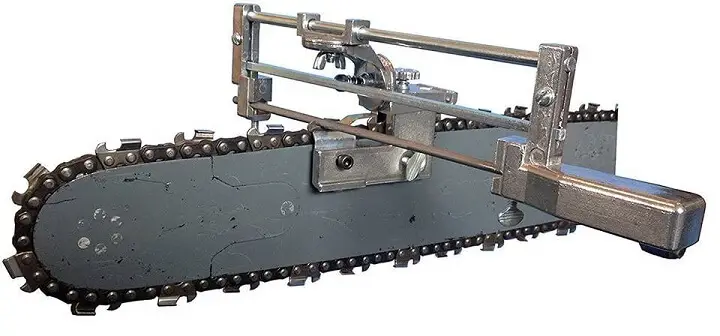
8. Do general maintenance on your powered equipment. Check the owner’s manual for recommended maintenance and maybe sit down and actually read the owner’s manual for the first time.
On the Range
As cold as it might be, we’re still going to spend time outside during winter. Here are some common sense things to think about as you ponder the coming cold, dark months ahead.
9. Walk your property before the first heavy snows. Make note of any fences that need to be mended, recent deadfall trees for some last-minute firewood, or anything else that would be a hassle to deal with in the dead of winter outdoors.
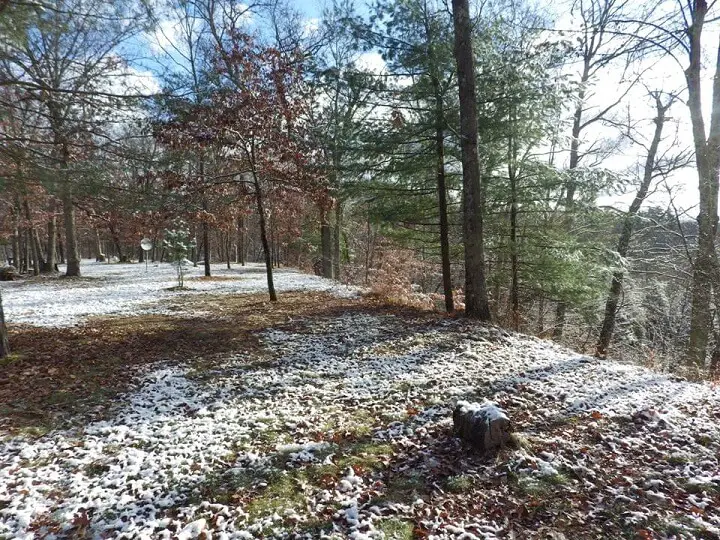
10. Set up an interior log splitting space. In spite of our best efforts to cut, split and stack firewood for the winter, many of us have had the late February experience of finding and adding wood to the wood pile after a surprisingly cold winter.
A dedicated space on a back porch or in a shed or barn for stacking and splitting firewood is worth thinking about. There are specialized tools for splitting in a confined space if you don’t have room to swing a splitting maul.
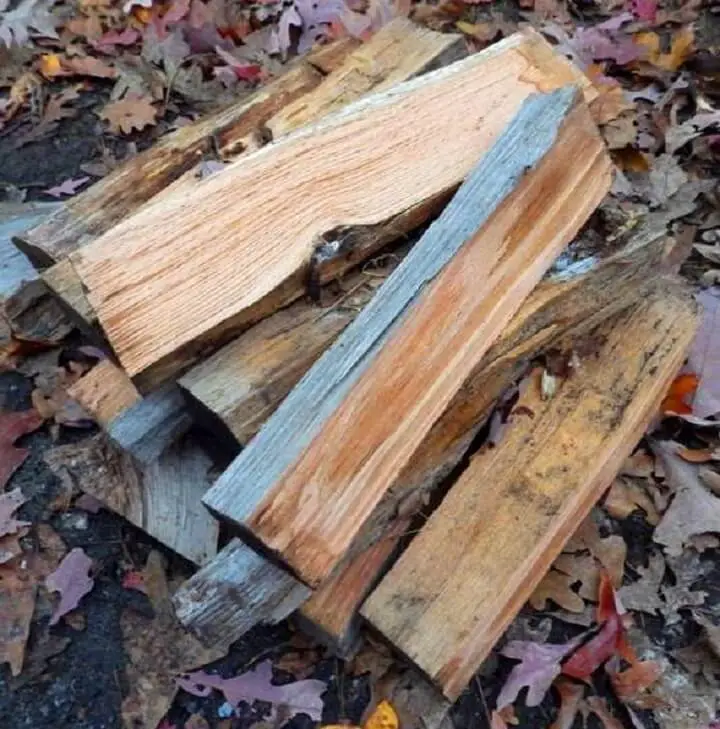
11. Cover your outside wood piles. A simple tarp over wood piles can make things a lot easier if you live in an area with heavy snow and ice. You don’t have to do anything fancy. Just cover the piles with tarps and hold them down with some extra logs.
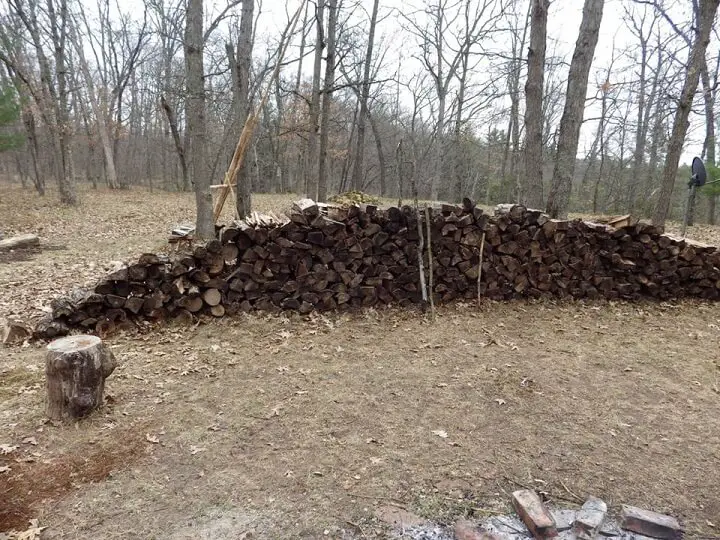
12. Protect any equipment stored outside. If there’s anything you have to leave outside because you’re out of storage space or it’s too heavy to move or too big to store, do something to protect it.
Tarps are the simplest solution, but you could even erect a tent to create temporary winter storage for a variety of items, or coat that anvil on the stump with a good amount of grease to protect it from rust.
Just take the time to stop and think. If it’s going to be outside all winter, what can I do to protect it from winter elements like cold, ice, and snow?
Livestock
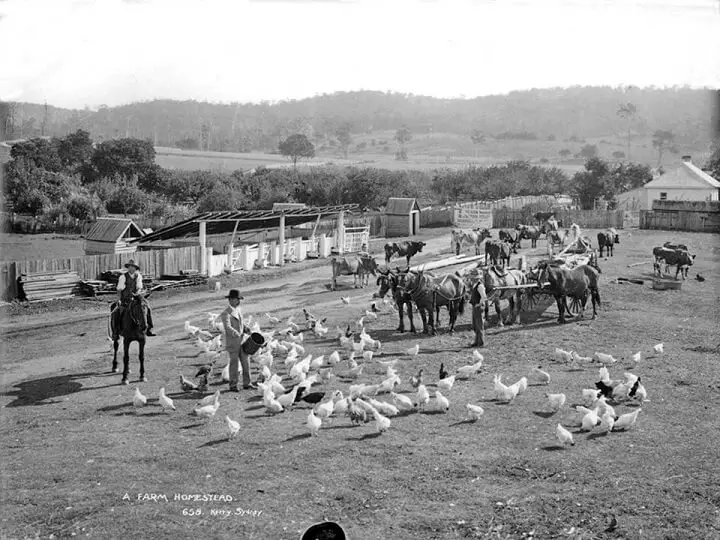
Most people experienced with animal husbandry know how to deal with winter cold and snow for their livestock, but if you’re just starting out, there are a few things to keep in mind.
13. Do your homework. Raising livestock takes a certain knowledge set, and if you have livestock, you’ve probably done some research on over-wintering or at least learned the hard way. Stop and think about winter factors affecting any livestock you’re planning to keep over winter whether they’re in a barn, coop or pen.
14. Do they require any level of heat? This varies by animal, but if you have remote heat for a barn or coop, make sure you have a way to monitor and maintain minimal temperatures. A remote, wireless thermometer in a barn, pen or coop can make it a little easier to monitor how your livestock are doing and help to make sure you keep them warm through the winter.
15. Is their drinking water frozen? Feeding is a regular routine with livestock, but the consistent challenge is freezing temperatures restricting drinking water. Installing an electric heating base under a watering system can make this easier to manage. We’re out checking those barns and coops frequently even in winter, but the water is worth keeping close tabs on when it’s cold.
16. Keep it clean. Livestock tend to stay in when it’s cold and they always make a mess. You know what to do.
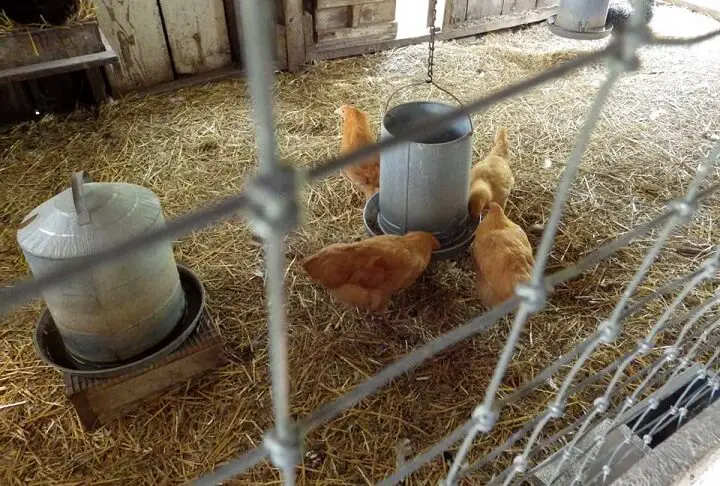
Hit the Ground Running
Spring on any homestead is one of the busiest times of the year. Many of us are all too familiar with the dawn to dusk to-do lists of Spring. A good way to stay ahead of springtime tasks is to use the downtime of winter to at least plan and to some degree, prepare for Spring.
Next Year’s Garden
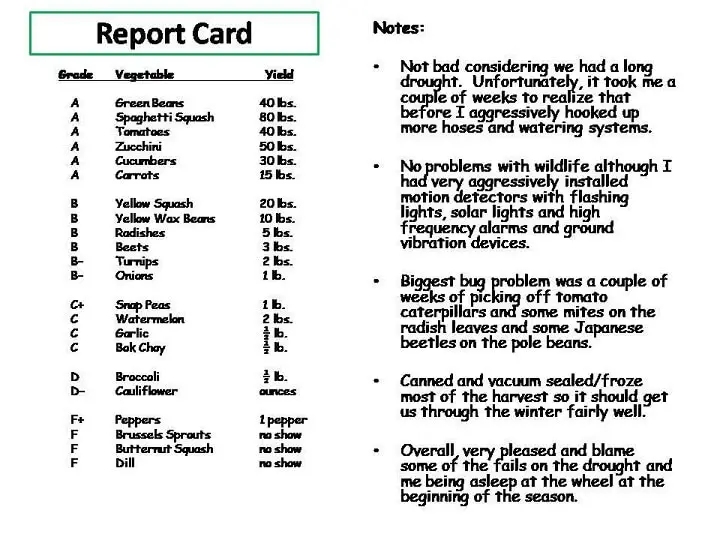
17. Plan it. Regardless of how long we’ve all been gardening, we learn something new every year. Winter is a good time to make a plan. Take the time to do a report card on the previous year’s garden and think about what you want to do for the coming Spring, or do better.
- If you saved seeds from the previous year, make sure they’re labeled and sealed in paper envelopes. (Not plastic. They can hold in moisture and cause the seeds to germinate in the bag.)
- Store any seeds in a dry location. Seeds don’t take up much space, so the back of a pantry could work, or a heated attic space where dry heat seems to collect.
- Diagram your new garden in terms of what and where you would plant next year’s crop.
- Remember succession planting when planning. Even in northern areas with shorter growing seasons, some vegetable varieties like radishes, beets, snap peas, and others mature quickly and can be planted again after the first harvest for additional harvests. It’s called succession planting.
- List the vegetable varieties and quantity of seeds you would need to buy.
18. Start you seedlings indoors and think about which vegetable varieties you would want to start indoors. Figure out a dedicated space and maybe build a rack to hold your sprouting trays. Check out seed germination and maturation rates so you know when to start.
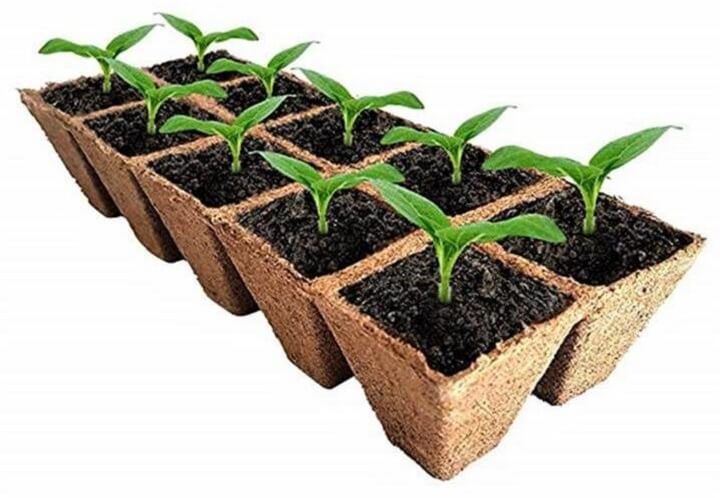
19. Feed your compost heap. There’s more to composting than just adding compost from kitchen scraps over the winter. That’s an automatic.
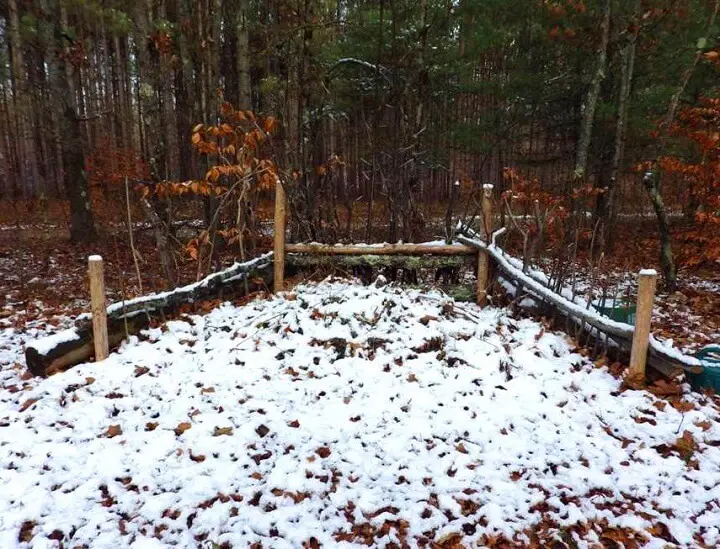
You can put your compost heap into overdrive by sprinkling some pelletized lime on top of the heap throughout the winter. The lime sweetens the soil and encourages bacterial growth which breaks down the organic matter more quickly. With luck, you’ll have an excellent bed of well composted soil for your Spring gardening prep.
Clothing
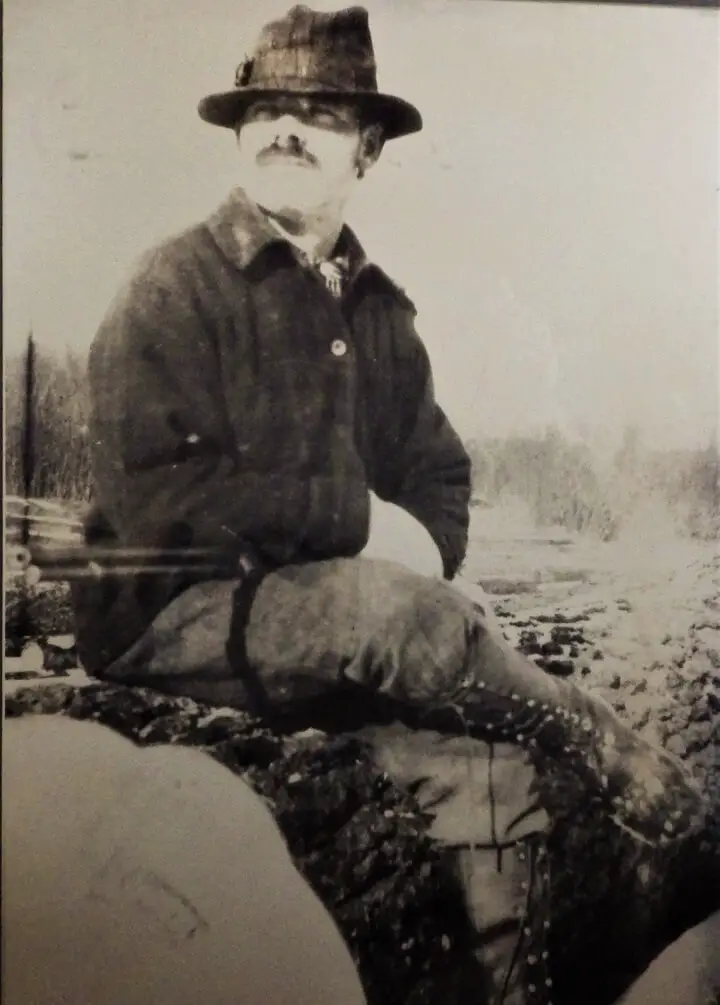
Most of us have a summer closet and a winter closet, and we rotate the clothing as the seasons change. But winter is a good time to think about our clothing and some simple sewing the way a good, frugal homesteader would.
20. Repair any winter clothing at the onset of winter. Waterproof any boots or shoes that are going to be exposed to snow, ice, or slush. Sew any socks or other winter clothing that got stored in the spring.
21. Consider new laces for boots and shoes.
22. Take stock of your socks. Do you need any new, insulated socks as winter wears on?
23. Take a quick look at the summer clothing you’re about to store for the winter and set aside any that need some attention. Winter is a good time for some relaxed sewing by the fire.
Learn Something New
Regardless of our homesteading skill sets, there’s always something new to learn: a new building skill, a new way of gardening or cooking, a new craft from rustic furniture building to quilting and knitting. Here’s a list of possibilities that can make you more self-reliant and save money too over the winter.
24. Knitting, Crochet, and Quilting
It’s not just for grandma anymore. The ability to take yarn, thread, and fabric and craft clothing and bedding is a classic pioneer skill that is making a comeback. The tools for knitting, crochet, and quilting are sold in kits. And once you learn the basics, there’s no end to what you can make.

25. Rustic Furniture Building
A slab from a log and 3 branches will give you a coffee table or an end table in an hour. All it takes is a little time and the determination to just try it.
There are more advanced tools for making ambitious things like bed frames from logs, but if you have the timber, some dedicated space and basic woodworking skill, you could craft any piece of furniture from rough timber.
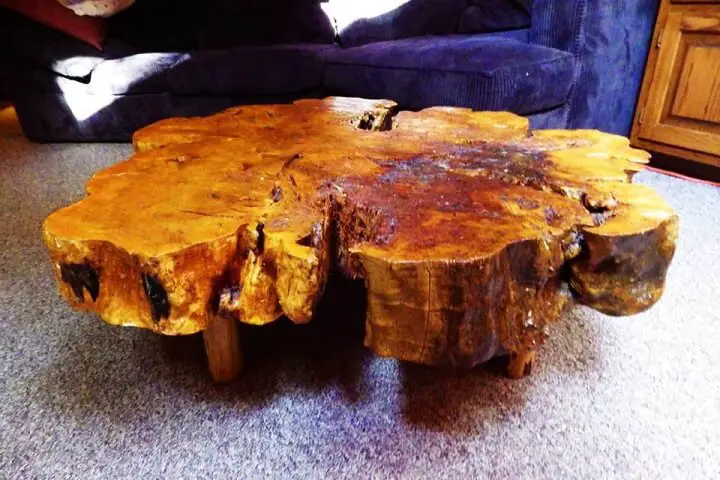
26. Candle Making
Another skill of self-reliance that’s easy to do although a bit dangerous if not done properly. Candle kits are a good way to start. An old crock pot is the safest way to patiently melt wax without a fire hazard. It’s another skill that, once mastered, will give you candles for every possible use.
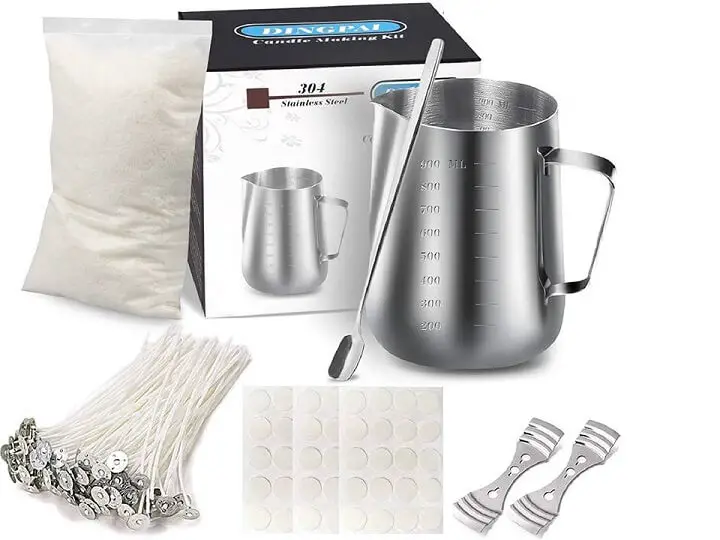
27. Leather Crafts
This is another skill that’s easy to learn and easy to do once you understand some basic concepts. The tools are inexpensive, and any piece of leather or leather scraps can be made into anything from sheaths for tools to belts and wallets and anything else you can think of made from leather.
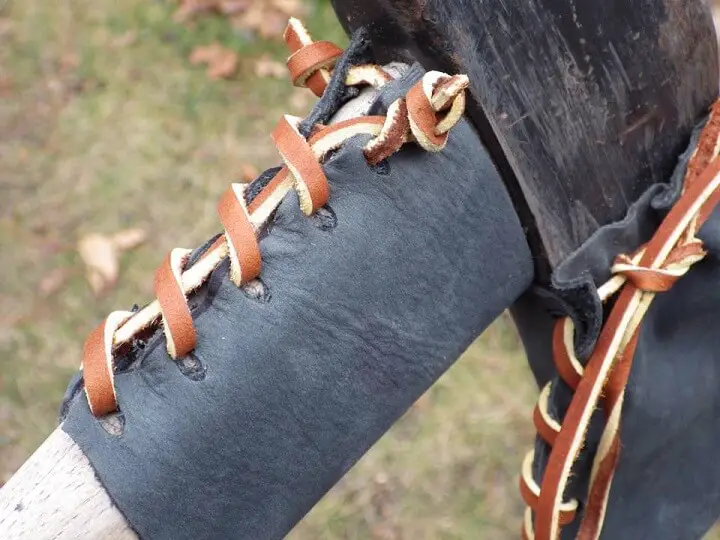
28. Net Making
Probably not at the top of the list for most of us, but once you understand the simple knots that make a net, you can find all sorts of uses for them from fishing nets and gill nets to easily setup garden trellises, instant fencing, and hanging storage.
If you have the cordage and a few simple tools, all you need is the skill to improvise any net you’ll ever need, and winter is a good time to do it.
29. Bread Baking
There’s a lot to learn about cooking in general, but the ability to bake a consistent loaf of bread has been a valued skill for every pioneer, prospector, explorer, and homesteader. Even if you’re an accomplished bread maker, there are hundreds of bread types from around the world that can make every meal a little more special. Better yet, winter is the best time for baking.
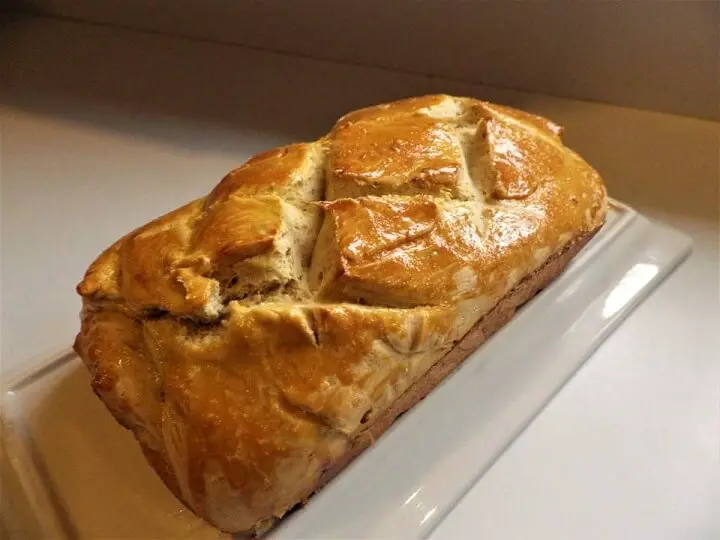
How many of us have an old tool rusting in a corner of the garage or shed? Winter’s a good time to dig it out and think about restoring it.
You’ll probably be dealing with lots of rust so you’ll need something to remove it, sandpaper; polishing and cleaning tools and a bit of patience. But the quiet time of winter may be a good time to get grandpa’s old vise working again or finally take a crack at those rusting cast-iron pots and pans on the floor in the barn.
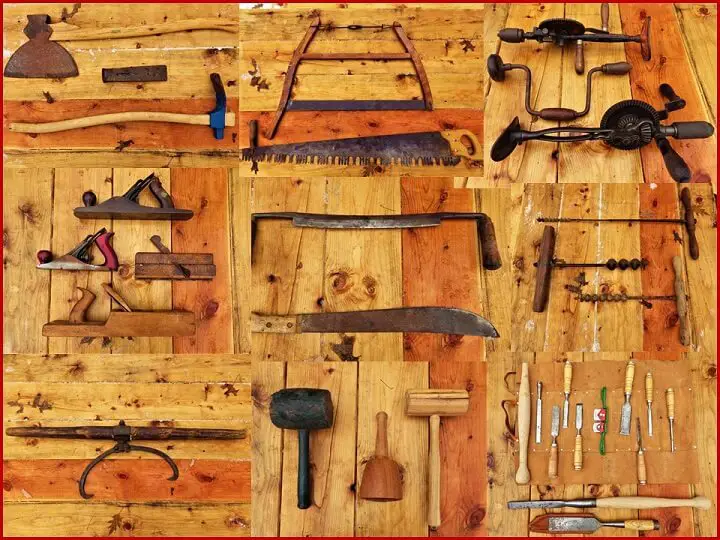
Try To Do One Thing a Day
There’s nothing wrong with taking a nice winter nap. Every homesteader deserves it. But if you make it a goal to at least do one thing each winter day, you’ll stay ahead of those chores that pile up in the Spring and maybe find a better way to pass the time in winter.
Have we missed anything?
Probably. For as much as we all have in common, we each have our own way. If you can think of any tips, advice, or lessons learned the hard way as we head into this winter season, please share in the comments section. And stay warm.
Like this post? Don't Forget to Pin It On Pinterest!



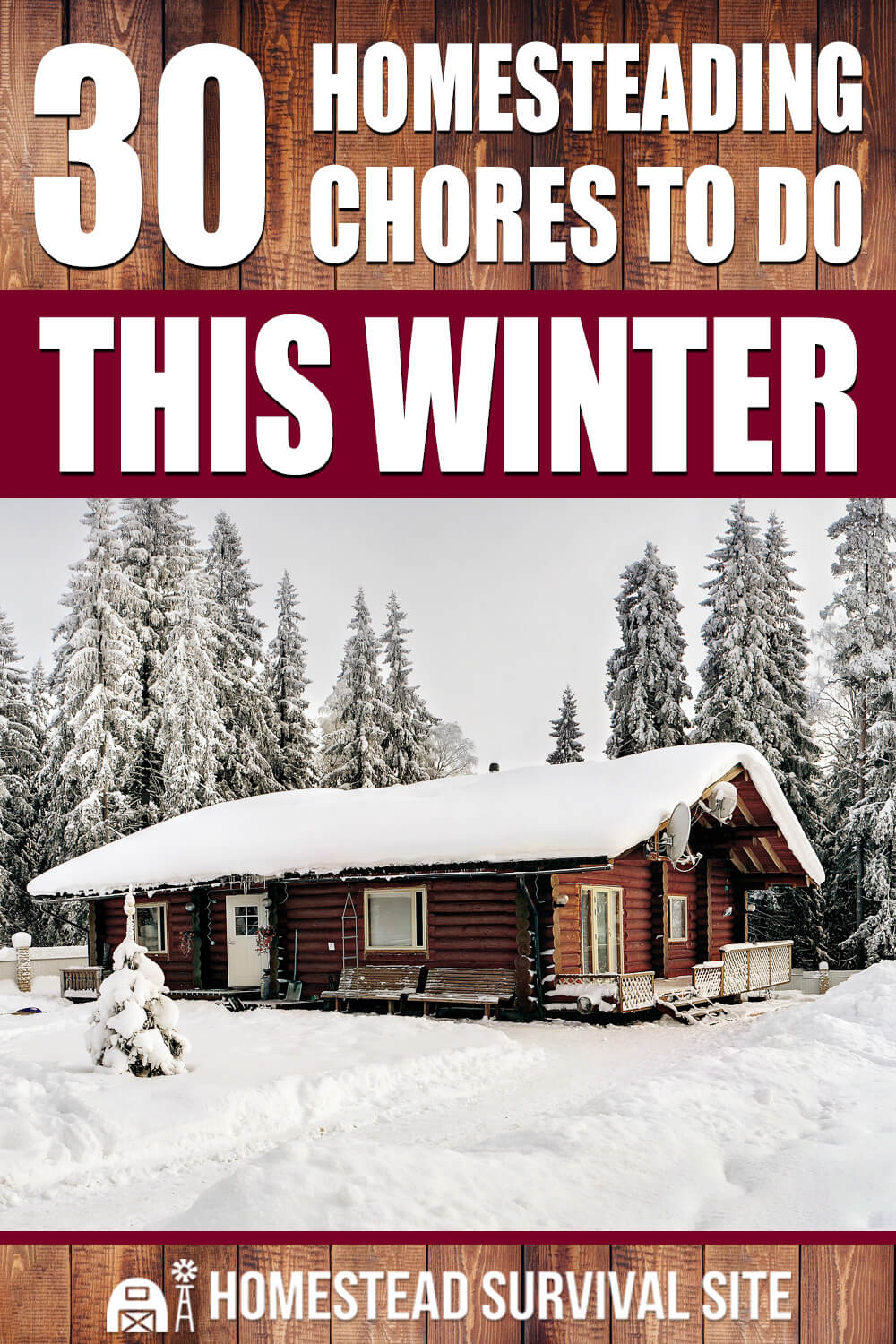

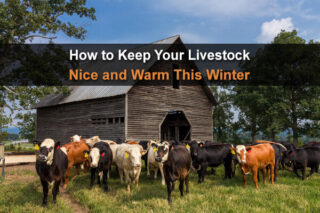







You might want to check the calking on the house windows and dors, and take out your binoculars and carefully examine the roof for any raised or fractured shingles.